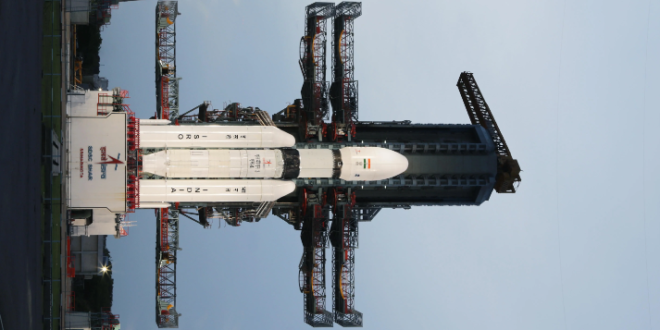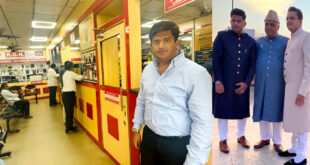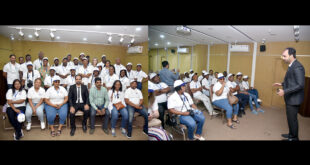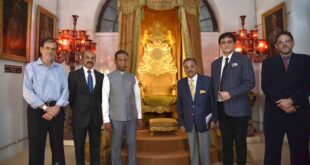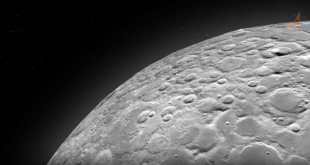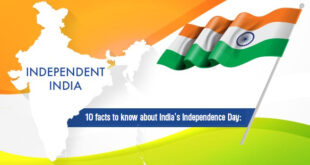Delving into the intricacies of Chandrayaan-3’s remarkable mission, it becomes evident that a constellation of advanced sensors plays a pivotal role in orchestrating its journey to the Moon’s surface. These sensors, each a testament to cutting-edge technology, work in harmony to ensure a safe, accurate, and successful soft landing.
According to the ISRO, these remarkable instruments are:
Laser Inertial Referencing and Accelerometer Package (LIRAP)
Ka-Band Altimeter (KaRA)
Lander Position Detection Camera (LPDC)
LHDAC (Lander Hazard Detection & Avoidance Camera)
Laser Altimeter (LASA)
Laser Doppler Velocimeter (LDV)
Lander Horizontal Velocity Camera (LHVC)
Micro Star sensor Inclinometer
Touchdown sensors
Let’s take a look at what some of these sensors do.
The Laser Inertial Referencing and Accelerometer Package (LIRAP) provides the spacecraft with essential data about its orientation and velocity, laying the foundation for precise navigation through space.
In addition to the LIRAP, the Ka-Band Altimeter (KaRA) assumes a crucial role in the mission. This sophisticated instrument meticulously measures the craft’s altitude, allowing for a detailed understanding of its position as it descends toward the lunar surface.
Accompanying these pivotal sensors is the Lander Position Detection Camera (LPDC), a visionary eye that captures intricate images of the Moon’s terrain, aiding the spacecraft in assessing its location and fine-tuning its trajectory.
The paramount importance of safety is underlined by the Lander Hazard Detection & Avoidance Camera (LHDAC), which ensures the craft steers clear of potential obstacles and hazards during its descent.
Adding another layer of precision is the Laser Altimeter (LASA), functioning in tandem with the KaRA to provide redundant altitude measurements. The mission’s velocity is meticulously calculated by the Laser Doppler Velocimeter (LDV), adding a further dimension of accuracy to the spacecraft’s critical data.
Aiding Chandrayaan-3’s controlled horizontal movement is the Lander Horizontal Velocity Camera (LHVC), which diligently monitors and records this essential aspect of its journey.
To maintain unerring orientation in the vast expanse of space, the Micro Star sensor comes into play. It is likely the best modern technology for intricate control used by ISRO.
The Inclinometer & Touchdown sensors complete the lineup, ensuring that the spacecraft’s angle and touchdown point are precisely determined.
The amalgamation of these cutting-edge sensors forms the backbone of Chandrayaan-3’s mission, representing a remarkable synergy of technology, engineering, and scientific endeavor.
Notably, the lander is equipped with a range of altimeters, including laser and RF-based variants, designed to meticulously measure altitude and aid in the craft’s controlled descent. Complementing this are velocimeters such as the Laser Doppler Velocimeter and the Lander Horizontal Velocity Camera, ensuring accurate assessment of the craft’s velocity and horizontal movement.
The lander’s orientation and navigation capabilities are orchestrated by the Inertial Measurement system, powered by laser gyro-based Inertial Referencing and Accelerometer package. In the realm of propulsion, the craft boasts an 800N Throttleable Liquid Engine, 58N attitude thrusters, and sophisticated Throttleable Engine Control Electronics, collectively empowering precise maneuvering and control.
Navigation, Guidance, and Control (NGC) form the heartbeat of the mission, with Chandrayaan-3 featuring cutting-edge software elements for powered descent trajectory design. Safeguarding against hazards during the descent is the dynamic combination of the Lander Hazard Detection & Avoidance Camera and advanced Processing Algorithm, ensuring that the craft maneuvers skillfully to avoid obstacles.
Not to be overlooked, the landing leg mechanism emerges as a crucial component, absorbing the impact of touchdown while ensuring the craft’s stability. Chandrayaan-3’s lander encapsulates a symphony of technologies, a masterpiece in itself, meticulously choreographed to orchestrate a soft and triumphant lunar landing.
These sensors collectively steer the spacecraft toward unlocking the Moon’s mysteries with unparalleled precision. As the mission unfolds, their role in guiding the craft’s descent becomes a testament to the indomitable spirit of exploration and discovery.
Disclaimer: The explanation of sensors is based on the understanding of the writer from the list of sensors provided by ISRO. This is purely for informational purposes only. Please corroborate with scientific resources for scientific accuracy. Errors and Omissions are unintentional.
 Gawah (The Witness) – Latest News, Current Affairs, Politics, Sports, Religion, Literature, Technology, Education, National, Local – Hyderabad Telangana India World Fearless By Birth, Pristine by Choice – First National Urdu Weekly From South India – Latest News, Breaking News, Special Stories, Interviews, Islamic, World, India, National News
Gawah (The Witness) – Latest News, Current Affairs, Politics, Sports, Religion, Literature, Technology, Education, National, Local – Hyderabad Telangana India World Fearless By Birth, Pristine by Choice – First National Urdu Weekly From South India – Latest News, Breaking News, Special Stories, Interviews, Islamic, World, India, National News

